what is often considered to be the first step in strategic​ planning?
5. SETTING THE Send PLANNING OBJECTIVES
5.1 Introduction
The setting of appropriate objectives is primal to the evolution and appraisement of any planning proposals. The transport planning objectives set for this written report express the desired outcomes in the study area and the wider local area.
There are iii distinct categories of objectives identified in STAG, namely Government, planning and external. Each of the three categories of objectives may have sub-objectives which can help in establishing a monitoring framework and for formal evaluation at a later stage.
The guidance contained in STAG recommends that, as a thing of good practice, the extent to which planning objectives ‘nest’ inside the nearly relevant Regime objectives should be considered. This simplifies the comparison of the relative performance of transport proposals against the Government’s objectives.
Based on the above, SMART (Specific, Measurable, Attainable, Relevant and Timed) transport planning objectives for the study take been established. This method of defining objectives provides a transparency to the objective setting process and assists in focussing on the key aspects of the project. Therefore, to ensure that the established transport planning objectives are consistent with other transport policy objectives, the following hierarchy have been considered:
- Government Objectives;
- National Transport Strategy;
- Regional Transport Strategy; and
- Local Transport Strategies.
5.2 The Government’s Objectives
The Government’s objectives that chronicle directly to the Aberdeen to Inverness Transport Corridor Study reflect the five main areas to be considered when appraising transport proposals, namely:
- Environment;
- Safety;
- Economy;
- Integration; and
- Accessibility and Social Inclusion.
These objectives, which were established in the White Paper ‘Travel Choices for Scotland’, tin can assist in any planning exercise to ensure that all possible impact areas have been considered every bit office of any send proposal. They too ensure that any transport proposals requiring Government funding are considered at a national level and reflect the responsibleness of the Authorities to balance the requirements and resources of different areas and communities throughout Scotland.
The transport planning objectives relating to Environment are equally follows:
- to reduce noise;
- to improve local air quality;
- to reduce greenhouse gases;
- to protect and enhance the landscape;
- to protect and heighten the townscape;
- to protect the heritage of historic resources;
- to support biodiversity;
- to protect the water environs;
- to encourage physical fitness; and
- to improve journey ambient.
The transport planning objectives relating to Safety are as follows:
- to reduce accidents; and
- to amend security.
The transport planning objectives relating to Economy are equally follows:
- to get good value for coin in relation to impacts on public accounts;
- to improve send economical efficiency for business users and send providers;
- to improve ship economic efficiency for consumer users;
- to better reliability; and
- to provide benign wider economical impacts.
The term Integration can specifically hateful the following:
- integration within and between different types of ship, so that each contributes its total potential and people tin can move easily between them;
- integration with the surround, so that the transport choices bachelor back up a better surround;
- integration with land-utilize planning, at national, regional and local level, so that ship and planning work together to back up more sustainable travel choices and reduce the need for travel; and
- integration with policies for education, health and wealth creation, so that transport helps make a fairer, more inclusive society.
The transport planning objectives relating to Integration are equally follows:
- to improve transport interchange;
- to integrate transport policy with land-use policy; and
- to integrate transport policy with other Regime policies.
The ship planning objectives relating to Accessibility and Social Inclusion are as follows:
- measurement of ease of access to the transport system itself in terms of, for example, the proportion of homes within x minutes of a omnibus stop or the proportion of buses which may be boarded by a wheel-chair user;
- measurement of ease of access to facilities, with the emphasis existence on the provision of the facilities necessary to meet people’s needs within certain minimum travel times, distances or costs;
- measurement of the value which people place on having an option bachelor which they might use simply under unusual circumstances (such as when the car breaks down) â€" ‘option value’ â€" or even the value people place on only the existence of an culling which they have no real intention of using â€" ‘existence value’; and
- measurement of ease of participation in activities (for personal travel) or delivery of goods to their final destination (for goods travel), provided by the interaction of the transport arrangement, the geographical blueprint of economic activities, and the pattern of land employ equally a whole.
The four uses of the term Accessibility and Social Inclusion have in the past overlapped but can exist expressed more but as:
- to increment choice values;
- to reduce severance; and
- to improve access to the send organisation.
5.3 The National Transport Strategy
The Government set v loftier level objectives for transport in Scotland’due south Transport Future. They are to:
- Promote economic growth by building, enhancing, managing and maintaining send services, infrastructure and networks to maximise their efficiency;
- Promote social inclusion by connecting remote and disadvantaged communities and increasing the accessibility of the transport network;
- Protect our environment and meliorate health by building and investing in public transport and other types of efficient and sustainable send which minimise emissions and consumption of resources and energy;
- Improve safety of journeys by reducing accidents and enhancing the personal safety of pedestrians, drivers, passengers and staff; and
- Improve integration by making journey planning and ticketing easier and working to ensure smooth connection between dissimilar forms of transport.
Within the National Transport Strategy (NTS), the Government recognises that potential tensions exist between these high level objectives such as promoting economical growth while protecting our environs. However, slap-up emphasis is placed on ensuring that synergy is achieved.
The strategy outlined in the NTS identifies 3 key strategic areas of focus to achieve this vision. They are to:
- Improve journeying times and connections, to tackle congestion and the lack of integration and connections in transport which bear on on our high level objectives for economic growth, social inclusion, integration and safety;
- Reduce emissions, to tackle the bug of climate change, air quality and health improvement which impact on our loftier level objective for protecting the environment and improving wellness; and
- Amend quality, accessibility and affordability, to requite people a choice of public transport, where availability ways ameliorate quality transport services and value for money or an alternative to the car.
Activity Program for Buses in Scotland
The aims, objectives and deportment accost the unlike types of development that are required in unlike parts of Scotland. They recognise that there is no ‘one size fits all’ solution, and that all partners need to act in various means, tailoring solutions to the specific issues. To ameliorate bus services through constructive transport planning we demand:
- a articulate vision of how local autobus services see local needs;
- greater utilise of bus plans with explicit actions to deliver vision;
- shut partnership working between transport authorities and double-decker operators; and
- improved communication with all stakeholders.
Scotland’due south Railways
The Track has a key role in Scotland’s National Transport Strategy. The vision for the railway in Scotland is that information technology should provide a safe, reliable customer focused service that supports the economy and delivers wider social inclusion and ecology aspirations. Although the railway cannot exist a solution for all of Scotland’s transport needs, the fundamental strengths of the railway will be maximised to develop the track network where that is the best long term solution to:
- Offer earth form train services which connect our city regions and major towns, providing journey times and quality of service that are competitive with machine and air;
- Provide access to inter-urban services through loftier quality interchange stations that link with feeder track services from intermediate stations and offer piece of cake transfer from car, bus, tram, subway, ferry, cycle and walking;
- Make driver train services attractive to passengers past ensuring that the journey to piece of work is a high quality, reliable travel option and by ensuring that our rolling stock choices take business relationship of environmental considerations, including air quality and racket emissions;
- Support heavily loaded freight trains carrying an increasingly wide range of products with effective interchange to route and sea; and
- Attain a rail industry that delivers efficiently and effectively to support our aims and vision.
Freight Activeness Plan for Scotland
The Government’s vision is for Scotland to be a place where the motility of freight, through the entire supply chain, is efficient and sustainable, on a transport infrastructure that is integrated and flexible thus allowing Scotland's businesses to compete and abound in a global economy. To attain this vision, the Freight Action Plan focuses on the post-obit aims and objectives for all primal partners in the public and private sectors:
- To enhance Scotland'due south Competitiveness:
- To support the development of the freight Industry in Scotland:
- To maintain and improve the Accessibility of rural and remote areas:
- To minimise the adverse impact of freight movements on the Surroundings in particular through the reduction in emissions and dissonance:
- To ensure freight ship policy Integration.
5.4 Regional Transport Strategies
The Aberdeen to Inverness transport corridor passes through ii regional transport strategy areas, namely:
- Hitrans, which includes the Highlands and Moray Quango areas; and
- Nestrans, which includes the Aberdeenshire and Aberdeen City Council areas.
Hitrans
Hitrans Regional Transport Partnership prepared a draft regional transport strategy (RTS) for the region in November 2006. The Strategy identifies common issues, builds consensus on the ways to tackle these issues, and sets out the priorities for hereafter investment in the region. The Strategy is considered a framework against which policy initiatives and projects tin can be adult across the region and beyond. The Strategy too seeks to promote the region's strategic priorities as policy develops at the national and local levels.
The development of the new Strategy is in keeping with the Transport (Scotland) Act 2005, which calls for the Strategy to programme how ship in the region will be provided, developed, improved and operated so as to:
- Enhance social and economical well-beingness;
- Promote public safety, including route safety and the safety of users of public ship;
- Exist consistent with the principle of sustainable development and to conserve and enhance the environment;
- Promote social inclusion;
- Encourage equal opportunities and, in particular, the observance of the equal opportunities requirements;
- Facilitate access to hospitals, clinics, surgeries and other places where a wellness service is provided; and
- Integrate with send elsewhere.
The Strategy is intended to contribute to the overall vision, aim and objectives as fix out in the White Paper - Scotland’due south Ship Future, dated June 2004. The improvement proposals outlined in the RTS are also intended to feed into the Strategic Transport Projects Review, which is currently being undertaken.
With reference to the Aberdeen to Inverness corridor, the following improvement options accept been identified in the Hitrans RTS:
- Inverness Drome and flights
- Surface Access Strategy to deliver amend integration
- Final building and rails extension
- Inverness to Aberdeen Runway Line
- Commuter services Elgin-Inverness
- Dalcross Station at Inverness airdrome
- Journey fourth dimension improvements and hourly departure Inverness to Aberdeen
- A96 Corridor Road
- Dual carriageway Inverness to airdrome
- Fochabers bypass with demand management & provision of infinite for passenger transport / cycling through Fochabers, plus passenger vehicle priority on approaches and P&R
- Elgin bypass with demand management & provision of infinite for passenger send / cycling through Elgin, plus motorcoach priority on approaches and P&R
- Other bypasses on road (including Nairn and Keith) with demand management & provision of space for passenger transport / cycling through settlements, plus bus priority on approaches and P&R
- Dual carriageway options on A96
- Variants of the above pick would include providing dual carriageway sections only
- Congestion & Urban Issues
- Raise connectivity between Inverness Retail Park and the city center
Nestrans
Nestrans Regional Transport Strategy (RTS) sets out the challenges facing Aberdeen City and Aberdeenshire over the next 15 years and how they volition be addressed. The strategy includes a comprehensive appraisement of the problems and issues affecting send in the north east, sets clear objectives and proposes a detailed plan of activity for improving transport in the region between now and 2021.
Nestrans vision is for a transport system for the north east of Scotland which enables a more economically competitive, sustainable, and socially inclusive society.
Four strategic objectives containing twelve operational objectives were developed from the detailed analysis of problems and bug. The 4 cardinal objectives are as follows:
- Economy - To heighten and exploit the north east’south competitive economic advantages, and reduce the impacts of peripherality;
- Accessibility and Social Inclusion - To enhance choice, accessibility and safety of send, particularly for disadvantaged and vulnerable members of social club and those living in areas where send options are limited;
- Environs - To conserve and enhance the north east’s natural and built environment and heritage and reduce the effects of transport on climate and air quality; and
- Spatial Planning - To support a stiff, vibrant and dynamic city centre and town centres across the north east.
The objectives set out in the Strategy guide the development of options and ensure that the terminal strategy meets the objectives.
The RTS has been developed based on the national objectives set out in the 2004 Transport White Paper and the NTS consultation certificate issued in July 2006. The final strategy volition exist updated to reflect the content of the final NTS and whatever schemes developed will too feed into the Strategic Transport Projects Review.
With reference to the Aberdeen to Inverness corridor, the following comeback options have been identified in the Nestrans RTS:
- Chapters and journey time improvements on the A96 west of Inverurie;
- Upgrading the A90/A96 Haudagain junction;
- A96 west of Inverurie - junction, alignment and overtaking opportunities;
- raise frequency of rail services between Aberdeen and Inverness;
- to ameliorate motorcoach services throughout the n east, to encourage modal shift and thereby reduce carbon emissions and other pollutants and utilise roadspace more effectively;
- Charabanc priority measures on A96 â€" arroyo to Dyce Drive;
- Park and ride â€" A96 Chapelbrae (Inverurie Route);
- Transport Interchange â€" Inverurie an integrated rail/motorbus/taxi interchange at Inverurie Station; there will also be bicycle lockers and increased car parking to encourage the use of Park & Ride, besides every bit improved traffic, pedestrian and cycling connections within the town;
- Enhancing the existing jitney services that serve the airdrome along the A96 corridor;
- Aberdeen Crossrail, including increased frequency of services and new stations in the Metropolis and Aberdeenshire;
- In the longer term, explore a stock-still link from the City to Aberdeen Drome, either equally an addition to Crossrail or as a guided charabanc road;
- Connected development of wheel routes on key routes within Aberdeenshire, into Aberdeen;
- Investigate potential for measures to provide more reliable journeying times for HGVs and identify a trial route for implementation of priority measures; and
- Support the development of modern inter-modal freight terminals to provide future capacity for rail freight expansion.
It should exist noted that the Nestrans RTS was published on 13 December 2006 and was not therefore available for discussion during either of the two stakeholder workshops.
5.5 Local Ship Strategies
The Aberdeen to Inverness transport corridor passes through four local send strategy areas, equally discussed in the following documents:
- Local Transport Strategy for the Highlands â€" October 2000
- The Moray Local Send Strategy
- Aberdeenshire Quango Local Transport Strategy Review 2006 â€" Full Consultation Document
- Local Transport Strategy for Aberdeen â€" December 2000
Local Send Strategy for the Highlands â€" October 2000
The following strategies have been promoted within the LTS combining brusque-term objectives with long-term vision. The targets relate the strategies to timescales and present two culling possibilities of what tin can be achieved with and without boosted funding. A partnership approach has been adopted and facilitated past the introduction of Community Planning to ensure the LTS is consistent with other relevant plans. The strategies include:
- Keep to fight for off-white fuel prices in Highland Quango Areas;
- Reduce the number of accidents and improve prophylactic on the road network;
- Make the best utilize of existing roads for all users;
- Restrain the demand for travel by private cars for commuting, particularly at peak hours, and provide alternatives to enable this; and
- Work with operators to provide a high quality integrated public send network appropriate to the needs of communities.
The main economical role of public ship over much of Highland is tourism. Although 82% of tourists travel by car, this leaves significant numbers who utilize trains and buses. With high fuel costs, the availability of reasonably priced public transport becomes increasingly vital for attracting tourists. The Inverness â€" Aberdeen route has a role for both business and leisure travel, and there is telescopic for this to be developed further. An integrated transport policy will allow for the most appropriate mode or modes to exist used for any journey, taking account of social exclusion and special needs, convenience and flexibility, economy and environmental factors such as avoidance of congestion and pollution.
Of the 962 kilometres of trunk road within Highland, only 40% has seen significant improvement within the last 30 years. The Council volition press the Scottish Executive to improve the A82 and the A96 every bit well equally to proceed improvements of the A95, A86, and A87, which were existence progressively improved by the Local Authorisation before trunking took place in 1996.
The Quango adopted the post-obit policy in regards to torso route network improvements:
- To recommend to the Secretarial assistant of State the level of service required on the trunk roads to come across the needs of the Highland area and assist in prioritisation of improvements to maximise benefits to the Highlands.
A desire to ameliorate body roads must nonetheless be balanced confronting the demand to meet route traffic reduction targets.
The Moray Local Transport Strategy
The Local Transport Strategy has been developed within the context of sustainable development and this encompasses economic, social and environmental considerations. Information technology is articulate that successful economical development depends upon efficient transport networks both within the Moray boundaries and linking it to the rest of the Great britain and Europe.
The nowadays trunk road network consists of the A96 to Inverness and Aberdeen, linking the A9 and A90 respectively, and the A95 from Keith to Aviemore. The A96 forms function of the Trans European Road Network in the North Eastward. The A96 currently suffers from irksome speeds due to dull moving vehicles, therefore there is a articulate demand for its improvement to dual carriageway, although in the curt term route action and the provision of boosted overtaking opportunities should be taken forrad. Information technology is essential that central bottlenecks are removed by providing bypasses at Elgin, Fochabers and Keith to increase journey reliability, also equally safety and other environmental benefits to the communities involved.
The following deportment accept been identified in the LTS:
- Upgrading the A96 to dual carriageway
- Upgrading the A98 and A941 to trunk road quality
- Provision of bypasses for Fochabers, Keith and Elgin
- Upgrading the A95 to trunk road standards
- Prioritising route improvements
- Maintaining roads and infrastructure
The need to improve the capacity of the Aberdeen - Inverness rail line was seen every bit a prerequisite to improving services, timetables and connections on that route. The main requirement is seen as the construction of passing loops to allow an increase in the number of services on the road. The fundamental actions identified in the LTS are:
- Improving the speed, quality and frequency of rail services within and connecting to Moray;
- Upgrading station staffing and facilities;
- Improving the integration betwixt rail and rail, and rail and jitney services at Elgin, Forres, Keith, Inverness and Aberdeen; and
- Promoting the increased use and reliability of rail freight.
In rural areas such every bit Moray, traditional bus services are often unviable. Therefore, at that place is a demand to promote price effective community initiatives which run across the transport needs of the population. A number of actions require to be considered further to meliorate the situation. These could include:
- More flexible use of school buses
- Relaxation of regulations regarding fare paying passengers on community buses
- The potential for a community double-decker network
- Maintaining and improving the existing bus network
- Upgrading public transport facilities
- Tackling rural accessibility
In addition, it volition be necessary for traffic direction measures to be formulated so that public transport motility is assisted. Traffic management measures include parking standards and provision, safety initiatives, physical and regulation measures, transport demand direction, teleworking and development planning. All have an important role to play in reducing and improving traffic problems within Moray. The post-obit actions are identified in the LTS:
- Ensure that parking provision is appropriate to requirements
- Provide car parking standards related to development appropriate to Moray
- Continue to monitor and review the Road Safety Program
- Improvement of traffic, cyclist, and pedestrian environments
- Promoting modern communications infrastructure
- Ensuring the availability of high technology training
- Focussing development in attainable areas
- Using developer contributions to aid in the provision of facilities for cycling, walking and public ship
- Promoting a reduction in car apply
Aberdeenshire Council Local Transport Strategy Review 2006 â€" Full Consultation Document
Aberdeenshire’s Local Transport Strategy sets out the Transport Vision and objectives of the Quango and provides a three-year Action Program for coming together local challenges and needs. The key bug identified include the need to limit the ecology bear upon of ship; social exclusion; peripherality; lack of accessibility to employment, health, higher education and leisure facilities; and the availability and affordability of public transport, which were identified by the Council’s initial public consultation on updating the LTS. A series of objectives based around the over-riding principles of sustainability take been developed. These include:
- To promote a sustainable economic system by maximising the effectiveness and efficiency of send services, infrastructure and networks;
- To promote social inclusion by connecting communities to facilities and services, and increasing the accessibility of the ship network;
- To reduce the environmental footprint of transport services, infrastructure and networks by reducing harmful emissions, and consumption of not-renewable resource and energy;
- To better safety and security of journeys by reducing casualties and enhancing the personal safe of all users of the send network; and
- To meliorate the integration of the transport organization betwixt dissimilar services and modes, and with other relevant local, regional, national and European policies.
The principal road links in the north east are the torso roads, namely the A90 s and due north, and the A96 to Inverness. The A96 connects Aberdeenshire and Aberdeen to Inverness. Working with HITRANS (the Highland and Islands Regional Ship Partnership), NESTRANS is looking to secure ongoing improvements to tackle the route’southward existing route safety problem and provide journey time reliability improvements.
The LTS notes that trunk road traffic growth over the last five years has generally been at low to medium growth levels (6.2% to 8.viii%). However, growth on the A96 corridor has been at, or beyond, high growth forecasts (11.two%). The level of growth diminishes to depression to medium levels outwith the Aberdeen City travel to piece of work area.
The proposals for the Aberdeen Western Peripheral Route are supported as this new route, which will connect the electric current A90 south of Aberdeen with the A96 trunk route to the due west of Aberdeen and the current A90 to the north of the urban center, will evangelize significant benefits to the North-east of Scotland, reducing the impact of increasing congestion and improving accessibility compared with the existing trunk road network through Aberdeen Metropolis.
Local Transport Strategy for Aberdeen â€" December 2000
The aims of the Transportation Strategy reflect the need to balance the requirement for a vibrant economy with a community in which everyone feels included, and at the same time minimising impacts on the environment. The City Council’south Interim Transportation Strategy independent five primal objectives. These are:
- To take full account of the environmental, social and economic implications of transport;
- To maximise accessibility for all to services and job opportunities;
- To campaign for improved external links to Aberdeen past rail, sea, road and air;
- To meliorate condom in transportation matters; and
- To ensure the efficient use of resources in accord with the strategy.
These five objectives encompass the principles of sustainable transport in line with balancing customs, economic and environmental considerations. As, they take full account of the Council’south corporate objectives of protecting the environs, ensuring the provision of quality services, enhancing commonwealth and enhancing the local economy. A comprehensive list of 28 sub-objectives has been defined, against which culling scenarios can be tested.
The LTS notes that in Aberdeen, the level of capital expenditure on ship projects fell from £7m per year in 1993, to only £2.1m in 1997. This partly reflected a dissimilar attitude to accommodating the uncurtailed demand for use of the private car (that is a move away from the "predict and provide" style of projecting motorcar demand and planning to cater for it). The purpose of the proposals identified in the LTS is to redress a situation where send in the north e of Scotland is chronically underfunded, to one where expenditure is available to ensure that the area tin take the transport infrastructure that it needs. The target set in the LTS is "by 2011, for expenditure on ship in the north east of Scotland to be at to the lowest degree double its present level, in real terms".
The Transportation Strategy has set a number of targets aimed at influencing travel demand within the Metropolis. Without continuing investment and enlightened attitudes to travel, many roads in the city will become heavily congested for most of the 24-hour interval. The following targets have been set aimed at addressing the Council’southward overall objective of reducing traffic as a way of improving economic, social and environmental circumstances within the Metropolis:
- By 2011, to reduce the modal share of travel to work in Aberdeen by car to less than 40% (a reduction of at least 1 quarter from 1991 figure of 53%);
- By 2011, to reduce the modal share of travel to work into Aberdeen City Centre by car drivers to 25% (a reduction by well-nigh one-half from 1991 figure of 44%);
- By 2011, to reduce the total number of vehicle trips within the Aberdeen Surface area, consisting of the City and its main catchment area of 20 miles around, by 20% of 1997 levels (a reduction of 29% on projected "practice nothing" figures); and
- By 2011, to reduce the total mileage travelled within the built-up surface area of Aberdeen past xx% of 1997 levels (a reduction of thirty% on projected "practice nada" figures).
The policies, proposals and targets for prioritising roadspace will seek to achieve the strategy objectives by making more efficient and constructive use of roadspace thereby increasing accessibility to the Urban center without the ecology effects of more road building. Encouraging buses assists in the shift towards safer modes of travel whilst beingness more socially inclusive. The proposals and targets identified in the LTS include:
- To introduce measures which requite greater priority to vulnerable route users;
- To introduce measures which give greater priority to buses as efficient users of roadspace;
- To give priority to goods vehicles in appropriate locations by 2003;
- To adopt a criteria-based organization within which to consider calls for roadspace priority, based on safe, environmental touch, economic contribution, community impact, accessibility, equity and public acceptability; and
- To investigate opportunities for taxi-only routes in the City past 2005.
Given the inadequacy of the existing trunk road network, the Quango believes that in that location is a need for a high quality route to dual carriageway standard with form separated junctions equally a key element of the Transportation Strategy to human activity both as bypass and as a benefactor around the City (the Western Peripheral Route).
5.six Typhoon Ship Planning Objectives â€" Stakeholder Questionnaire
As office of the consultation process, a questionnaire was issued to all stakeholders to provide them with the opportunity to comment on existing weather condition inside the ship corridor, to identify key problems and to define draft send planning objectives.
The draft objectives divers in the returned questionnaires are set out in Tabular array v.ane.
Table 5.1 â€" Draft Transport Planning Objectives Identified in Stakeholder Questionnaire
| Ref. | Typhoon Ship Planning Objectives | Appraisal Criteria Objective | |||||
|---|---|---|---|---|---|---|---|
| Environs | Safety | Economy | Integration | Accessibility | |||
| Stakeholder Questionnaire | |||||||
| Q1 | Acceptable journey times | ? | |||||
| Q2 | Increment journeying fourth dimension reliability | ? | |||||
| Q3 | Enable and support economic growth | ? | |||||
| Q4 | Raise efficiency on the network | ? | |||||
| Q5 | Reliable road and rails network | ? | ? | ||||
| Q6 | Ease the menses of traffic | ? | |||||
| Q7 | Reduce carbon emissions | ? | |||||
| Q8 | To reduce environmental intrusion | ? | |||||
| Q9 | Safer, more environmentally friendly transportation | ? | ? | ||||
| Q10 | A safety infrastructure | ? | |||||
| Q11 | Reduced conflict between unlike modes of transport | ? | |||||
| Q12 | To reduce the accident rate on the A96 | ? | |||||
| Q13 | Increase public transport usage | ? | |||||
| Q14 | Providing increased public transport opportunities | ? | |||||
| Q15 | Increment multi-modal journey opportunities | ? | |||||
| Q16 | Integration of ship services | ? | |||||
| Q17 | A traffic free cycle corridor along the road | ? | |||||
| Q18 | Improve the standard of the road | ? | |||||
| Q19 | Better infrastructure provision | ? | |||||
| Q20 | Build a road infrastructure that is fit for purpose | ? | |||||
| Q21 | Enhanced safety, integration, accessibility and environment | ? | ? | ? | ? | ||
| Q22 | Improve connections between communities in the NE and Due south of Scotland | ? | |||||
5.seven Draft Transport Planning Objectives â€" Stakeholder Workshops
The first Stakeholder Workshop was held on 26 October 2006 in Elgin. The stated objectives of the workshop were to:
- inform all stakeholders of the purpose, extent and details of the Aberdeen to Inverness Transport Corridor Written report;
- involve stakeholders in reviewing existing/future atmospheric condition, identifying problems and opportunities, and setting transport planning objectives;
- establish the views of stakeholders on the bug along the corridor, identifying what they consider to be the most serious; and
- enable stakeholders to understand the position of others and that priorities and solutions tin can conflict with each other.
The second Stakeholder Workshop was held on 12 Dec 2006 in Elgin. The stated objectives of the workshop were to:
- agree the SMART objectives developed for the Ship Corridor;
- review and update the Do-Minimum / Reference Case for the corridor;
- generate improvement options; and
- sift the improvement options.
As an integral part of the workshop, a serial of draft ship planning objectives were identified. These objectives were developed by three separate groups based on the information nerveless in response to the Stakeholder Questionnaire and through open debate during the course of the workshop.
The typhoon transport planning objectives adult at the first Stakeholder Workshop are set out in Table five.2
These draft objectives have been considered further to distinguish betwixt objectives and solutions, and to place common themes, which has led to the development of SMART objectives for the written report.
Workshop reports were produced to document the central outcomes of the workshops.
Table 5.2 â€" Draft Transport Planning Objectives Adult at First Stakeholder Workshop
| Ref. | Draft Transport Planning Objectives | Appraisal Criteria Objective | ||||
|---|---|---|---|---|---|---|
| Environment | Safety | Economy | Integration | Accessibility | ||
| Workshop Group 1 | ||||||
| W1 | Upgrade the standard of road fit for purpose due to too much traffic for the standard of road â€" annihilation to a higher place 13,000 AADT upgrade to a dual carriageway within 5 years. | ? | ||||
| W2 | Ensure average journey times don’t exceed 2 hours for road through bypassing the urban areas due to long journey times. | ? | ||||
| W3 | Reduce bear on of agricultural traffic from current levels past 10% pa over 10 years due to agronomical traffic causing platoons. | ? | ? | |||
| W4 | Separated / segregated lay-by every 10 miles in each direction, and overnight HGV facilities near or adjacent to ship interchanges due to lack of lay-by facilities. | ? | ||||
| W5 | Ensure average journeying times along the corridor practice non vary by 10% due to burdens on firms using the corridor. | ? | ||||
| W6 | Provide safety off route bike facilities between communities that are within 10km along the A96 corridor due to no prophylactic or practical route for commuting by bicycle. | ? | ? | ? | ? | |
| W7 | Reduce disharmonize between strategic and local traffic and betwixt pedestrians and vehicles â€" Bypassing urban areas and demand management due to perceived route safety problem. | ? | ? | ? | ||
| W8 | Increase the capacity of the rail line to accommodate an hourly service i.due east. double tracking and passing loops due to rail services existence not frequent enough. | ? | ? | ? | ||
| Workshop Group ii | ||||||
| W9 | To provide increased overtaking opportunities along the route to address safety and reliability issues. | ? | ? | |||
| W10 | To adapt increased demand through improved ship infrastructure for all modes. | ? | ||||
| W11 | Improve train frequency by introducing 2-hourly clock face service. | ? | ? | |||
| W12 | To upgrade road geometry to current design standards. | ? | ? | |||
| Workshop Group 3 | ||||||
| W13 | Increase modal share past sustainable modes of send to meet identified targets. | ? | ? | |||
| W14 | At least meet national and local accident targets along route. | ? | ||||
| W15 | Improve journeying time reliability for both road and rail. | ? | ? | |||
| W16 | Integration of land-employ planning, policies and plans to minimise the touch of travel generated. | ? | ||||
| W17 | Accost air quality problems at least in line with Govt and EU targets to contribute to the air quality action plans. | ? | ||||
| W18 | Accost climatic change and emission targets at to the lowest degree in line with Govt policy. | ? | ||||
five.8 SMART Transport Planning Objectives
Based on the to a higher place, SMART (Specific, Measurable, Attainable, Relevant and Timed) send planning objectives take been developed for the written report. These written report specific objectives take been nested within the Government’s five master objectives to highlight synergies between objectives and to attain a level of consistency in the reporting process. Information technology should be noted that any comeback options considered in response to these objectives would exist developed and assessed in accord with standard procedures and would be required to satisfy prevailing statutory procedures.
Environment
Through the consultation and workshop process, some stakeholders identified a problem with ecology issues along the corridor.
Addressing air quality issues, at least in line with Authorities and EU targets, to contribute to the air quality action plans and addressing climatic change and emission targets, over again at least in line with Government policy, accept been identified as transport planning objectives by the stakeholders. Although these over-arching objectives are part of the Government’southward national targets, local improvement schemes could make a positive contribution within the Aberdeen to Inverness corridor. Reducing congestion, specially in urban areas, should improve local air quality.
It should also be noted that the environmental bear upon of whatever options existence considered will as well exist assessed and appropriate mitigation measures volition be introduced to maintain and enhance the environment along the route.
In addition to contributing to the national, regional and local transport planning policies, the SMART ship planning objective for the Corridor Study relating to the Environment is as follows:
a) To reduce congestion, particularly in urban areas, to make a positive contribution to improving local air quality.
Safety
Through the consultation and workshop process, stakeholders identified a trouble with road safety issues forth the corridor.
The feedback received through the consultation process regarding route safety issues has been investigated through examination of the local accident statistics taking into account local accident rates and severity ratios based on current traffic volumes and carriageway standards.
In improver to contributing to the national, regional and local transport planning policies, the SMART send planning objectives for the Corridor Study relating to Prophylactic are every bit follows:
b) In the immediate short term, improve road rubber along the A96 between Aberdeen and Inverness where the local accident rate AND the associated severity ratio for a cluster of accidents both exceed the corresponding national average values over the 5 year menstruation (2001 to 2005) to reduce local values to less than the national values.
c) In the short term, improve road safety along the A96 between Aberdeen and Inverness where the local accident rate OR the associated severity ratio for a cluster of accidents exceeds the corresponding national average values over the five year menstruation (2001 to 2005) to reduce local values to less than the national values.
Economy
Through the consultation and workshop procedure, stakeholders identified a trouble with platooning of traffic due to tedious moving vehicles within the traffic stream and a lack of overtaking opportunities leading to unreliable journeying times. It was also noted that the national speed limits for the rural single carriageway sections vary between 40 mph and 60 mph depending on the type of vehicle. In urban areas, the conflict between strategic and local traffic was likewise identified equally a problem. The feedback received through the consultation process regarding variability of vehicle speeds on some sections of the A96 has been investigated through site observations and data drove surveys.
In addition to contributing to the national, regional and local planning ship policies, the SMART send planning objectives for the Corridor Written report relating to Economy are every bit follows:
d) In the medium term, to ameliorate journey time reliability on rural sections of the A96 trunk route where the speed limit is threescore mph to achieve an average link speed which is more than than 50 mph OR a minimum link speed which is less than 30% below the average link speed relative to the 2006 baseline conditions.
e) To reduce conflict in urban areas between strategic traffic and local traffic.
Integration
Through the consultation and workshop procedure, stakeholders identified a problem with integration forth the corridor.
The key problems related to an infrequent rail service, constrained timetable and failure to maximise opportunities for commuters. Stakeholders also identified a trouble with the capacity of the railway to accommodate an hourly service.
In addition to contributing to the national, regional and local transport planning policies, the SMART transport planning objective for the Corridor Report relating to Integration is as follows:
f) In the medium term, to achieve a 5% mode shift from private automobile commuting and inter-urban trips to more than sustainable forms of transport, including omnibus, rail, walking and cycling, within the ship corridor and to contribute to the Uk target for reducing carbon emissions.
The local objective includes a specific reference to reduce emissions in response to the Government’s loftier level objectives to protect the environs.
Accessibility & Social Inclusion
Accessibility is defined as the relative ease with which individuals or groups can reach amenities or services of importance.
Through the consultation and workshop procedure, stakeholders identified a problem with Accessibility forth the corridor.
The key problems related to the provision of condom cycle facilities between communities and the disharmonize between pedestrians and vehicles within the urban areas.
In addition to contributing to the national, regional and local send planning policies, the SMART transport planning objective for the Corridor Study relating to Accessibility & Social Inclusion is equally follows:
g) To encourage cycling and address pedestrian severance issues in support of sustainable forms of transport.
Based on the to a higher place, the potential synergies between the SMART ship planning objectives have been investigated. This has resulted in the three objectives ‘a’, ‘e’ and ‘g’ being combined into a unmarried objective. The local objective was after extended in recognition of the Government’southward high level objectives regarding economic growth.
The combined single objective is as follows:
a+east+g) In the long term, to reduce the disharmonize between strategic and local traffic in urban areas leading to improvements in local air quality, reduced severance for pedestrians and supporting economic growth and development inside the corridor.
Based on feedback during the consultation process, an additional Ship Planning Objective was identified concerning the motility of freight by road and rail. Although this was not identified as a key problem during the workshop, the problems associated with the motility of freight was highlighted on the consultation questionnaires. The following additional objective has therefore been divers:
h) In the medium term, to improve the efficiency of freight movements along the transport corridor.
The final SMART objectives, including an implementation timeframe, are therefore every bit follows. For the purpose of these objectives, short, medium and long term has been taken as up to 5, ten and fifteen years respectively.
The relationship between the SMART Send Planning Objectives developed for the Aberdeen to Inverness Transport Corridor Study and the Government’s five chief objectives for transport is shown in Tabular array 5.3.
The established objectives are generally consequent with the three primal strategic outcomes of Scotland’s National Transport Strategy, dated December 2006, namely:
- ameliorate journeying times and connections;
- reduce emissions; and
- better quality, accessibility and affordability.
Table 5.3 â€" SMART Transport Planning Objectives
| Ref. | SMART Send Planning Objectives | Appraisal Criteria Objective | ||||
|---|---|---|---|---|---|---|
| Environment | Safe | Economy | Integration | Accessibility | ||
| 1 | In the immediate short term, amend road prophylactic along the A96 betwixt Aberdeen and Inverness where the local accident rate AND the associated severity ratio for a cluster of accidents both exceed the corresponding national boilerplate values over the 5 twelvemonth period (2001 to 2005) to reduce local values to less than the national values. | ? | ||||
| 2 | In the short term, improve road safety along the A96 between Aberdeen and Inverness where the local accident rate OR the associated severity ratio for a cluster of accidents exceeds the respective national average values over the 5 twelvemonth period (2001 to 2005) to reduce local values to less than the national values. | ? | ||||
| three | In the medium term, to improve journey fourth dimension reliability on rural sections of the A96 trunk road where the speed limit is 60 mph to achieve an average link speed which is more than 50 mph OR a minimum link speed which is less than 30% below the average link speed relative to the 2006 baseline conditions. | ? | ||||
| iv | In the medium term, to achieve a v% mode shift from private motorcar commuting and inter-urban trips to more sustainable forms of send, including bus, rail, walking and cycling, within the ship corridor and to contribute to the UK target for reducing carbon emissions. | ? | ? | ? | ? | |
| 5 | In the long term, to reduce the conflict between strategic and local traffic in urban areas leading to improvements in local air quality, reduced severance for pedestrians and supporting economical growth and development inside the corridor. | ? | ? | ? | ? | |
| 6 | In the medium term, to ameliorate the efficiency of freight movements along the transport corridor. | ? | ? | |||
Based on the SMART objectives adult during the consultation process, the sections of the A96 trunk route where improvements should exist considered to achieve the send planning objectives for journey time reliability are shown in Figure 5.7.ane. This Figure highlights the six sections where the average speed is less than 50 mph and the minimum speed is more than than 30% below the average speed. The geographical locations of these sections are shown in Figure v.7.ii.
The sections of the A96 trunk route where improvements should be considered to achieve the transport planning objectives for improved road safety are shown in Effigy 5.7.3. This Figure highlights the seven 1-kilometre long sections where the local blow rate and the local severity ratios for a cluster of 5 or more accidents during the 5-year menses between 2001 and 2005 both exceed the equivalent national values. The geographical locations of these sections are shown in Figure 5.7.4.
Effigy five.7.ane Average Vehicle Speed by Management
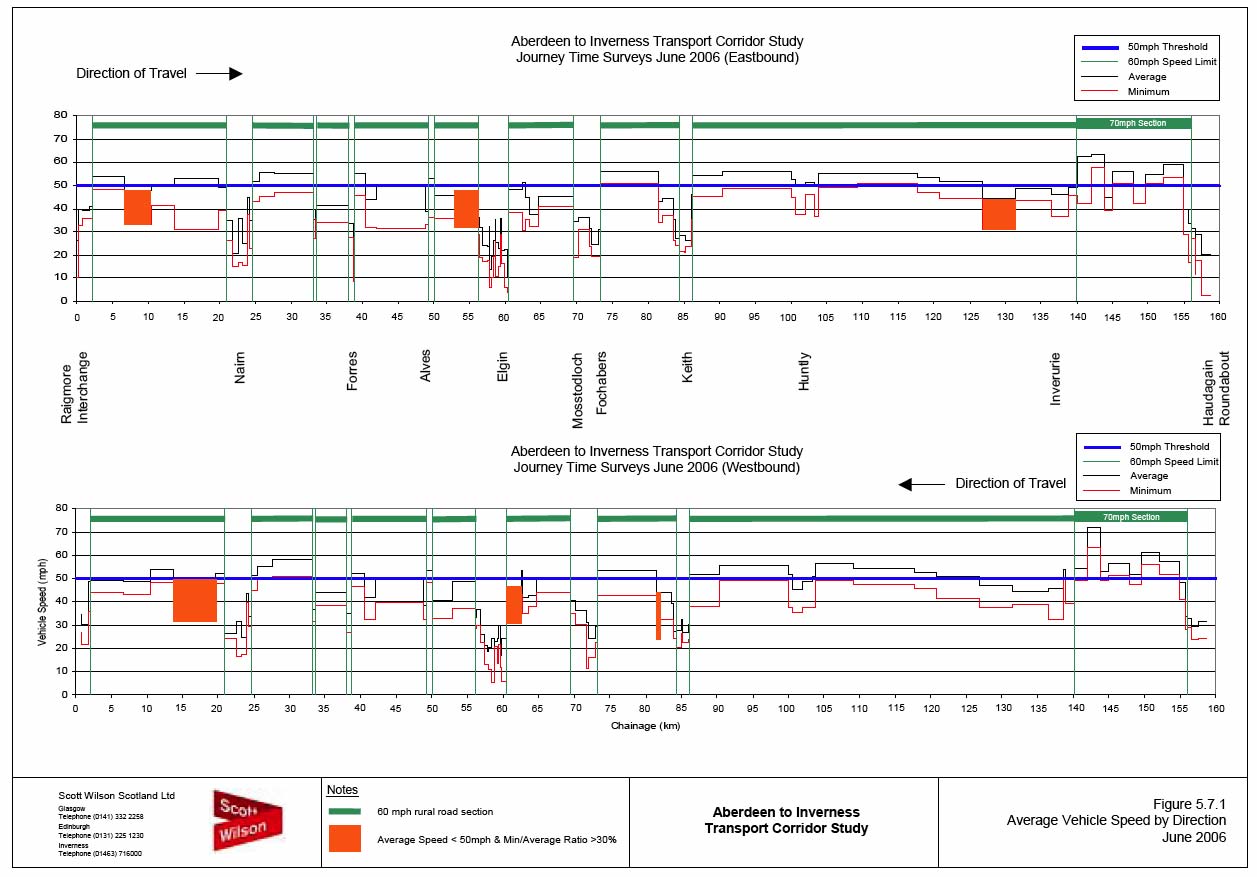
Effigy 5.7.2a Journey Time Constraints
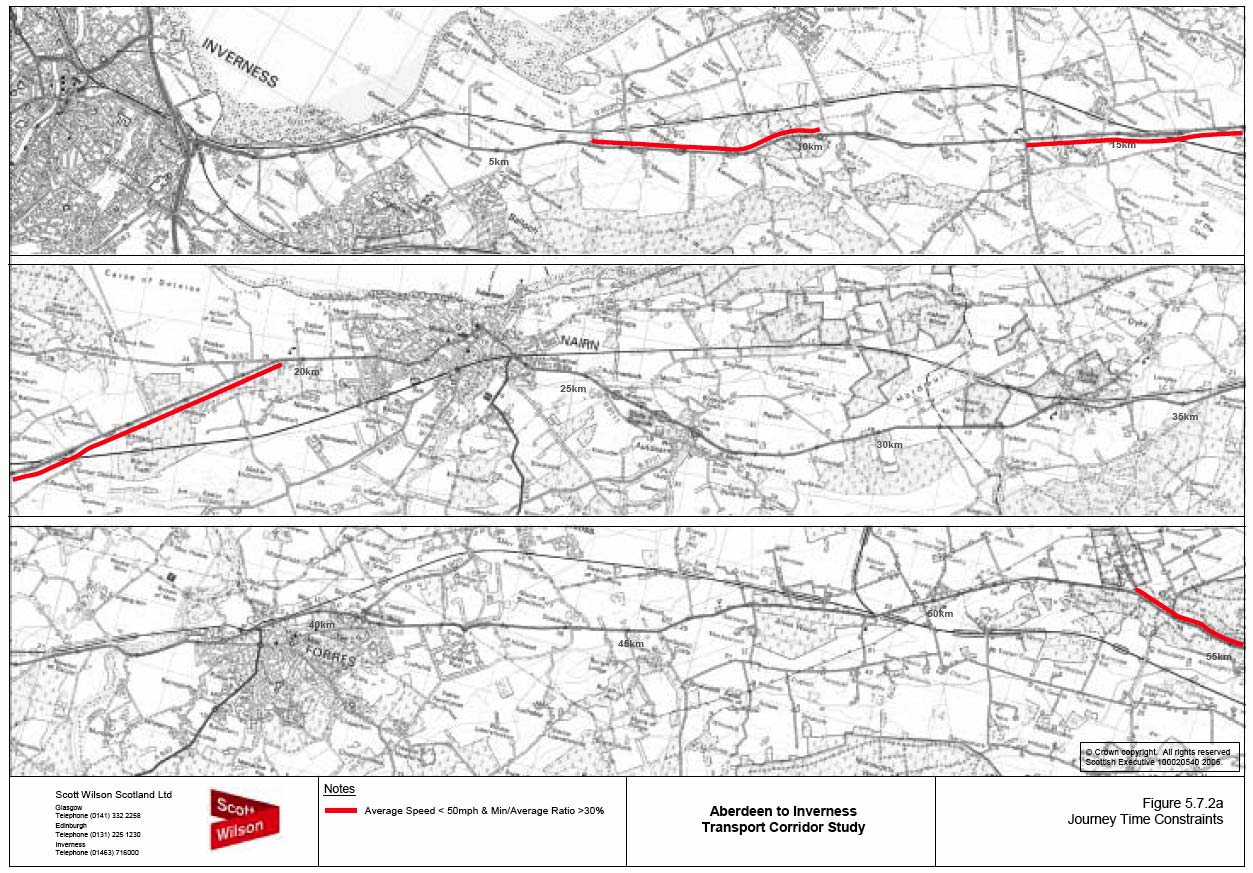
Figure v.7.2b Journeying Fourth dimension Constraints
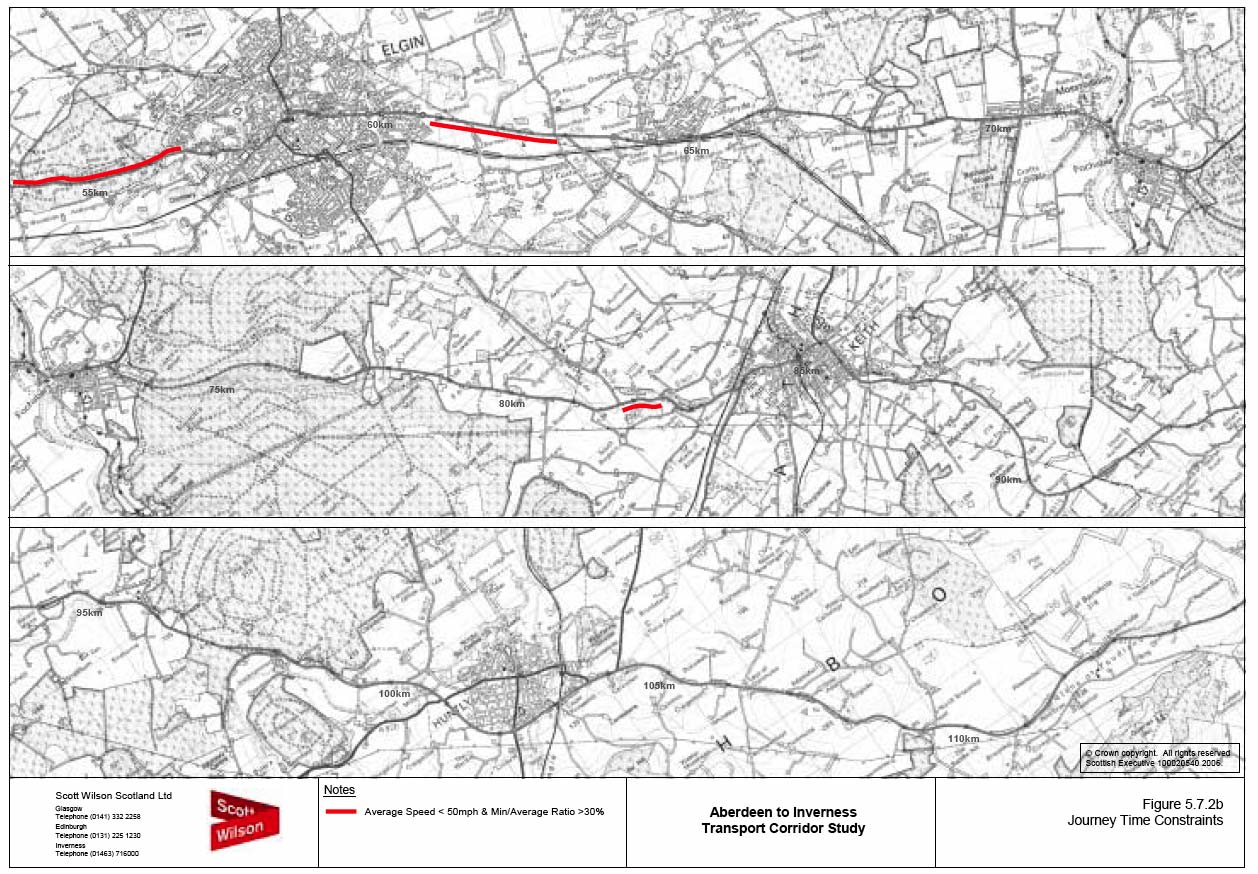
Figure five.7.2c Journey Fourth dimension Constraints
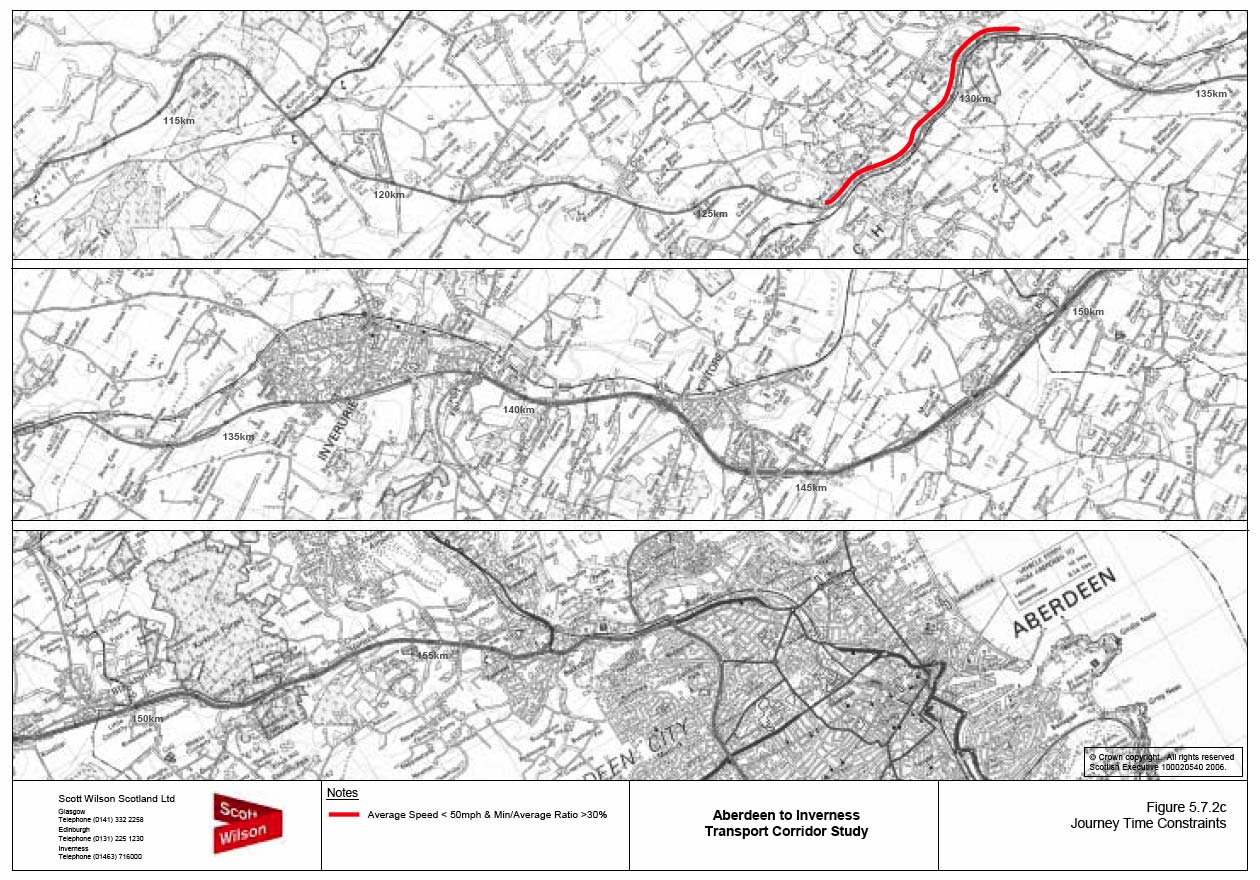
Figure 5.7.iii Blow Charge per unit and Severity past km (2001-2005) Locations with a cluster of 5 or more than accidents
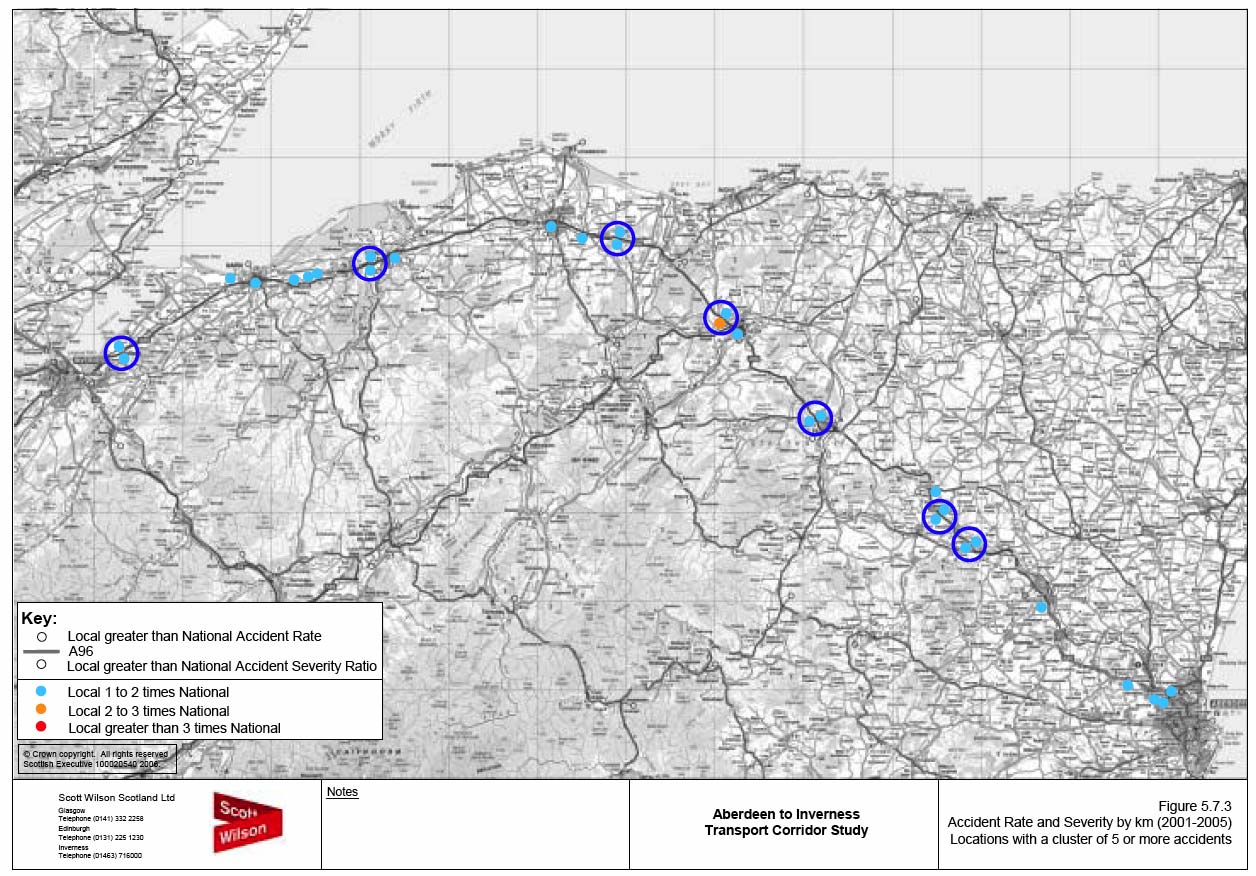
Figure 5.vii.4a Local Accident Severity Ratios and Accident Rates per km
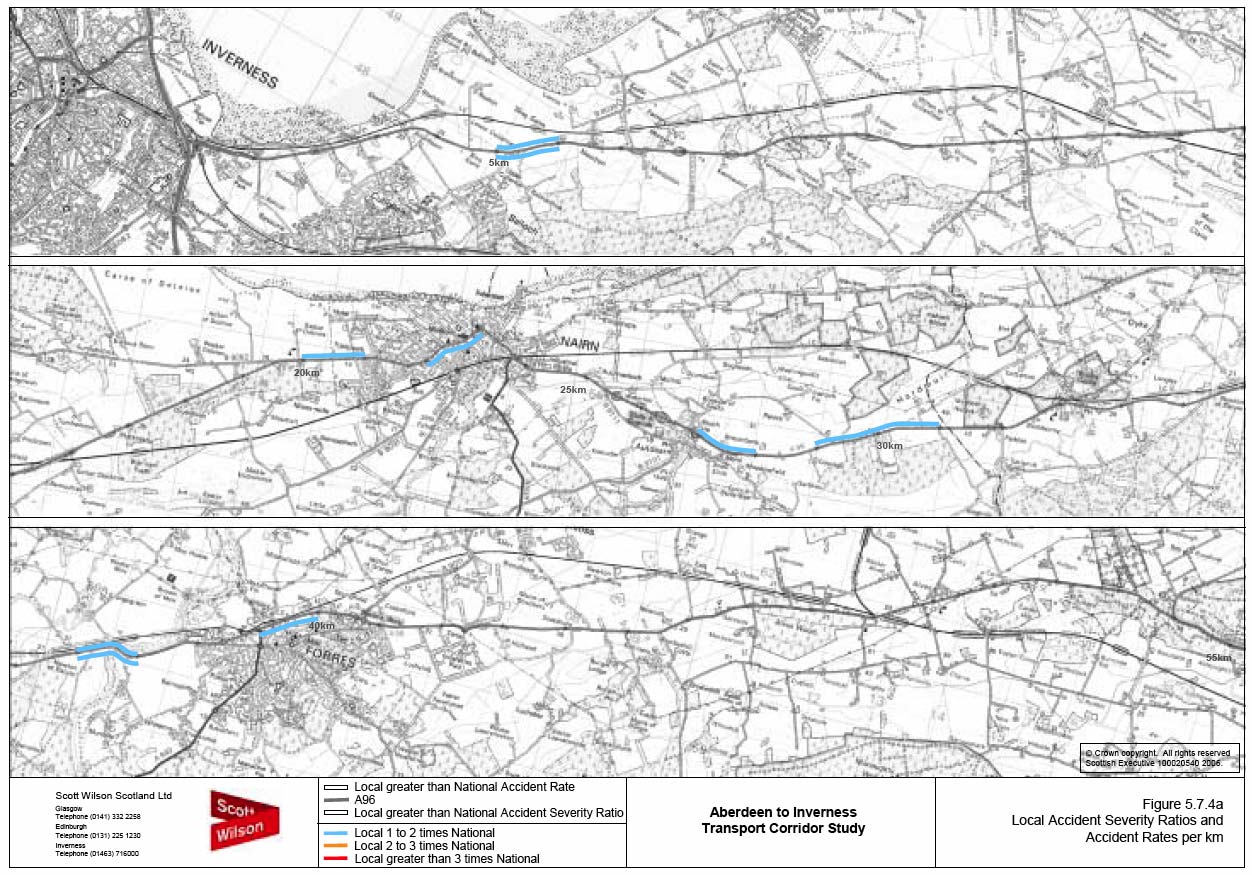
Figure 5.7.4b Local Accident Severity Ratios and Blow Rates per km
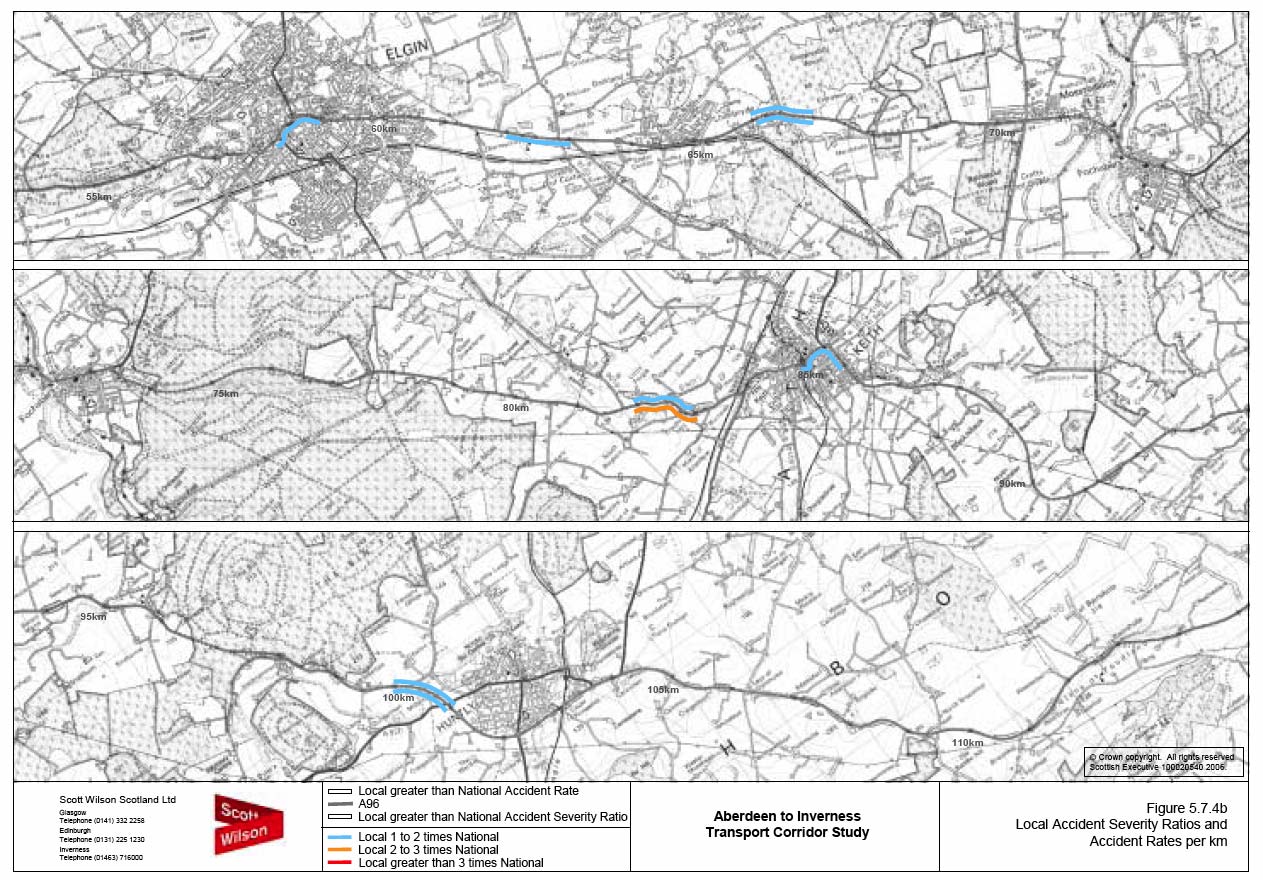
Figure v.seven.4c Local Blow Severity Ratios and Accident Rates per km
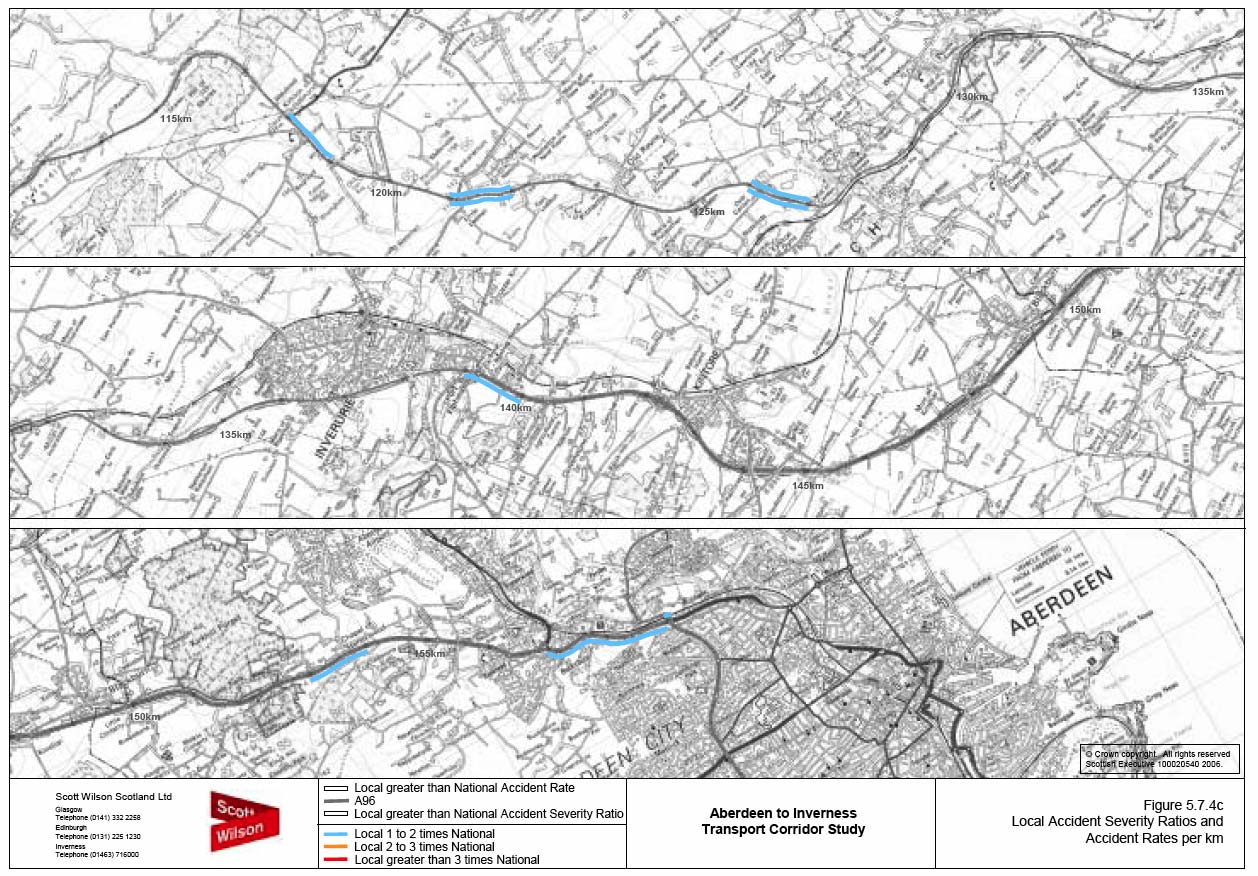
Source: https://www.transport.gov.scot/publication/aberdeen-to-inverness-transport-corridor-study-stag-pre-appraisal-final-report/j8773a-05/
0 Response to "what is often considered to be the first step in strategic​ planning?"
Post a Comment